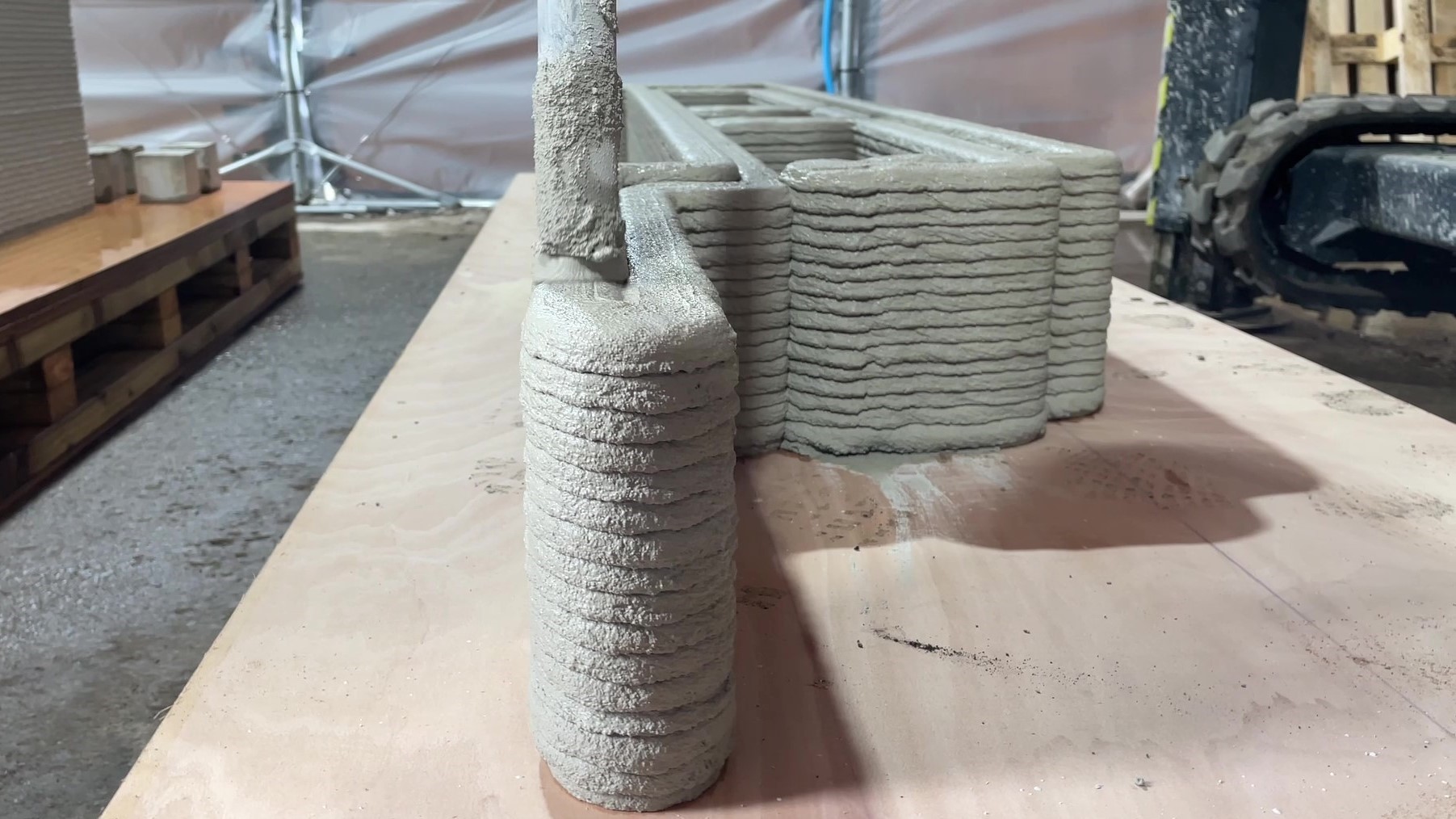A trailblazing project to demonstrate the benefits of 3D concrete printed components for the water industry has taken a huge step forward.
United Utilities, the water company for the North-West, and tech innovators ChangeMaker 3D are working with Manchester Metropolitan University and Scottish Water on a project to develop ‘Water Industry Printfrastructure’.
The project receives funding from the Ofwat Innovation Fund, a £200 million Innovation Fund to grow the water sector’s capacity to innovate, enabling it to better meet the evolving needs of customers, society and the environment.
In a first for the water industry, United Utilities is hosting a 3D concrete printing hub where assets for use in the sector are being printed in a matter of hours compared to the several days it would take using traditional methods.
The hub, at Wigan Wastewater Treatment Works, is also being used to demonstrate the benefits of this innovative process to other water companies, construction partners and other industries.
Products are produced using robotics and materials from CyBe robotics. Some of the items produced are being shared with Scottish Water for trialling on a project.
The ambitious project is the culmination of three years of development and testing which began when ChangeMaker 3D was selected to take part in United Utilities’ award-winning Innovation Lab back in 2021.
Together they achieved a first for the water industry in 2022 when they produced a wastewater chamber for use at one of United Utilities test facilities in Cheshire. Since then, both the printing process, and finished products have undergone rigorous testing to prove their suitability for use.
The hub is being used to print a range of equipment including combined sewer overflow (CSO) chambers which will play a vital role in helping to reduce spills from the sewer network.
The printing process for a CSO chamber is just over an hour, they are then left for a minimum of three hours to dry – this compares to two days needed using traditional methods. Some small items can be printed in as a little as 45 minutes. It also delivers safety benefits by reducing the requirement to work at height or in confined spaces.
The technique is also financially and environmentally efficient – carbon savings of around 50% can be achieved.
United Utilities’ Head of Innovation Kieran Brocklebank said the introduction of the printing hub is an exciting development: “We’ve been working closely with ChangeMaker 3D for three years during which time the processes have been honed. To finally see a production line of assets being printed is a huge step forward and one we were all excited to see.
“We are about to embark on our biggest ever capital investment programme and have tight deadlines to meet. Digital technologies such as 3D construction printing will play an important role in driving efficient construction and helping us meet our Net Zero goals for carbon.”
Natalie Wadley, Co-Founder and CEO of ChangeMaker 3D, added: “The water industry has a major challenge, and we can’t afford to stand still. This project really shows the solution, as well as the adoption and impact of the technology at large. We’ve really built a transparent and honest relationship with United Utilities which has enabled us to step through this journey together, face this head on and remove the barriers as they appear. We’re a bootstrapped business, grown organically with the support and funding from Ofwat’s Innovation Fund and clients, enabling us to act. We can’t keep doing what we’ve always done, the time to act is now.
Ian Watt, Scottish Water’s Beyond Net Zero Delivery Manager added: “We have already employed a variety of techniques such as off-site construction, recycling core materials and using low carbon concrete to move towards achieving our ambitious targets.
“By thinking ‘clever’ and adapting traditional methods to modern needs and aspirations we can build on our successes and 3D concrete printing is certainly a method that could work very well for us. We would like to thank Ofwat and United Utilities for giving us the opportunity to collaborate and find out more.”
As well as 3D concrete printing, the project will also see products being printed using polymer materials.




